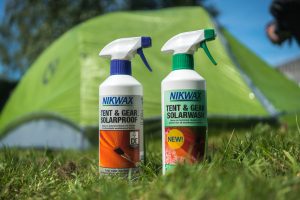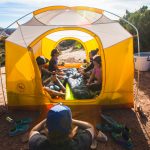The best sleeping pads for backpacking, camping, and other outdoor activities are not always the most expensive. But they do need to be lightweight, warm enough for cold nights in the mountains, comfortable under a backpacker’s hips and shoulders, durable against sharp rocks on the ground or on uneven terrain–and don’t forget easy to inflate.
In this blog post, we’ll provide you with our top picks from among some of the latest models on the market. Read more below to find out which product is right for your needs.
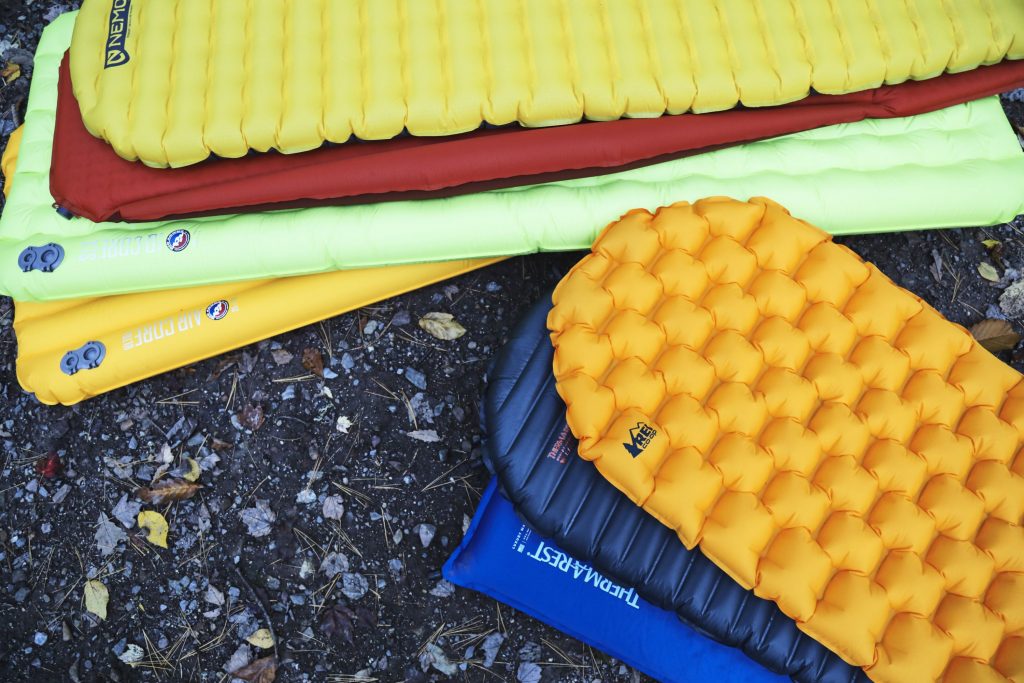
Table of Contents
Quick Recommendation
| RANK | PICTURE | NAME | RATING | SHOPS |
|---|---|---|---|---|
| Best Overall | 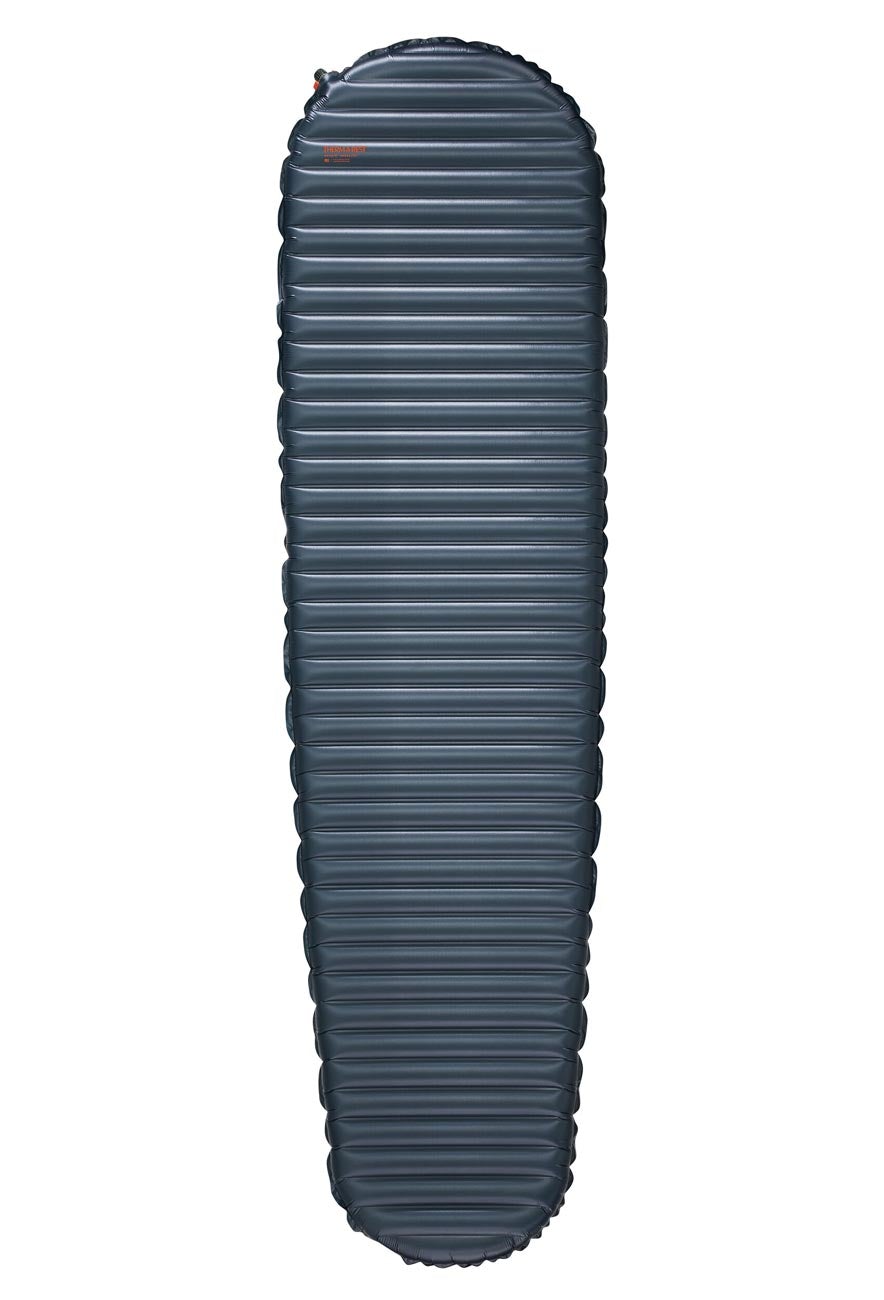 |
Therm-a-Rest NeoAir UberLite
|
 |
|
| Editor Choice |  |
Therm-a-Rest NeoAir X Lite
|
 |
|
| Editor Choice | 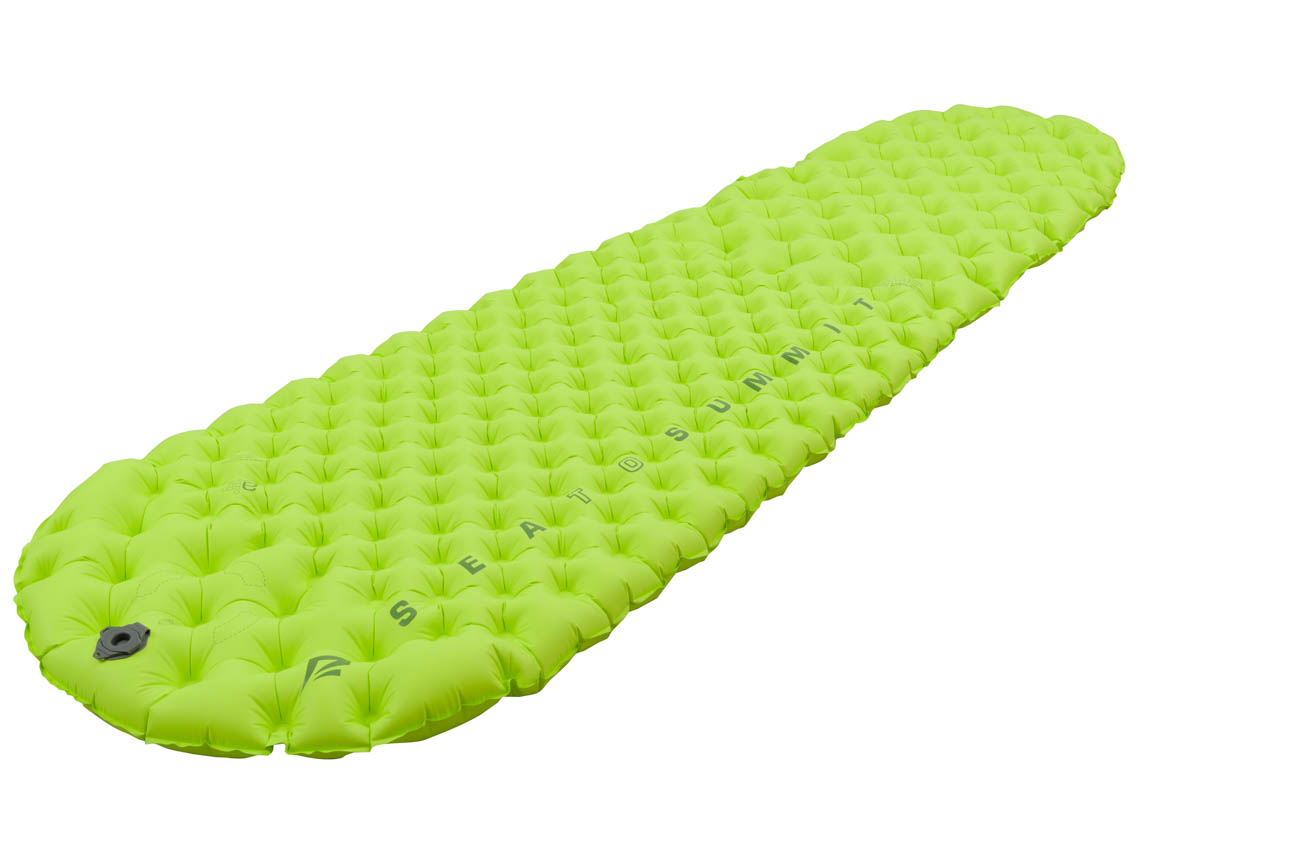 |
Sea to Summit Comfort Light
|
 |
|
| Best Budget |  |
Klymit Static V
|
 |
|
| Editor Choice | 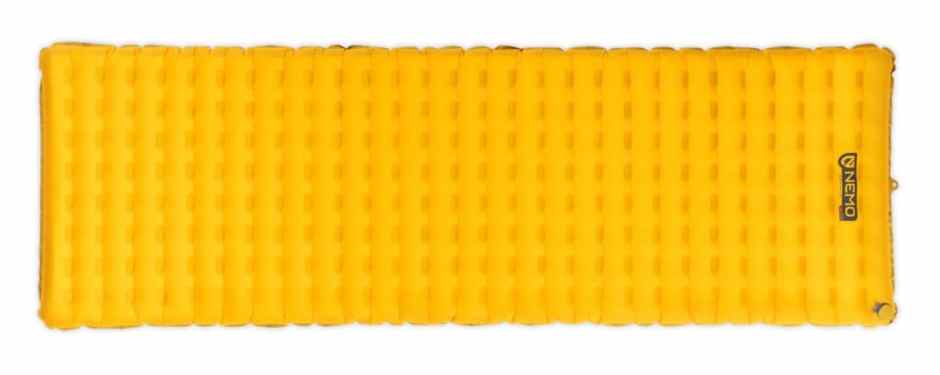 |
Nemo Tensor Ultralight
|
 |
Therm-a-Rest NeoAir UberLite

Thickness: 2.5 inches
Type: Inflatable
Weight: 8.8 oz
R-value: 2.3
What we Like: Light, Appropriate size, Triangular core matrix texture, Van Winlock, Dryloft shell
What We Don’t Like: Not Suitable for cold weather
Review: The Therm-a-Rest NeoAir UberLite is one of the lightest and most compact sleeping pads on the market. It inflates quickly and easily with just a few breaths, thanks to its triangular core matrix texture. The UberLite also features an external Van Winlock valve for easy deflation and packing away. Plus, it has a Dryloft shell that’s durable and keeps you warm.
NeoAir® XLite™
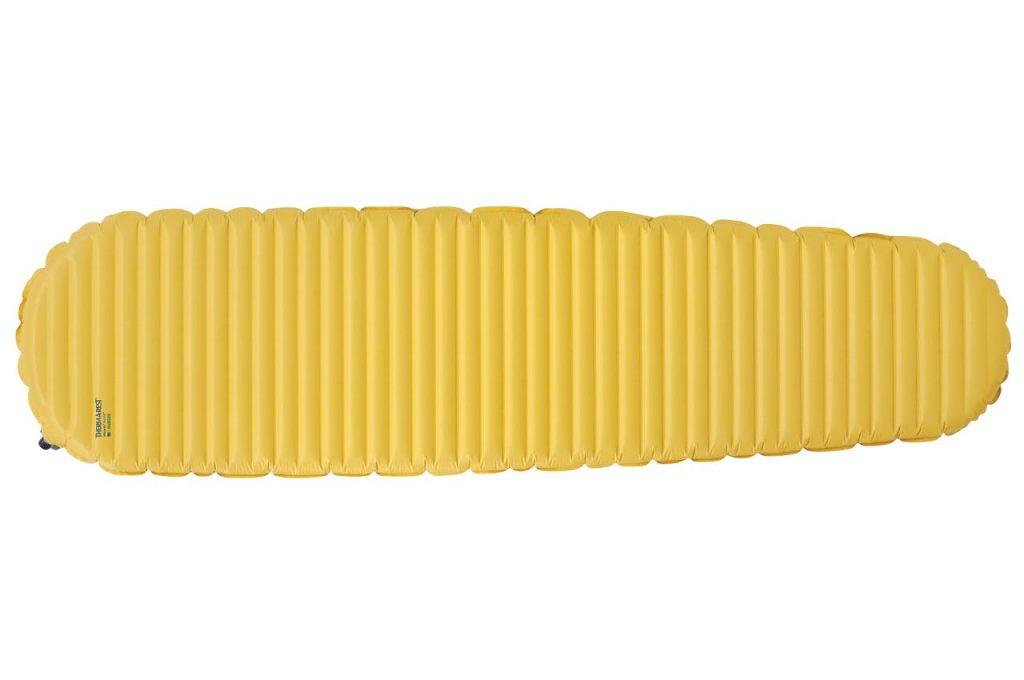
Thickness: 2.5 inches
Type: Inflatable
Weight: 12.5 oz
R-value: 4.2
What we Like: Lightweight, comfortable, High R-value, Good Quality
What We Don’t Like: Expensive
Review: The Therm-a-Rest NeoAir XLite is a high-quality and lightweight sleeping pad that is perfect for backpackers. It inflates in just a few breaths and provides an impressive R-value of four point two, meaning it will keep you warm on cold nights. The XLite also features a comfortable design with baffled construction to prevent air movement and heat loss.
At twelve point five ounces, the XLite is not the lightest pad on the market, but it is still much lighter than most other inflatable pads. And while it is a bit more expensive than some of its competitors, we believe the high-quality materials and construction make it worth the investment.
If you’re looking for an inflatable sleeping pad that is lightweight and warm, the NeoAir XLite will be a great choice.
SEA TO SUMMIT Comfort Light
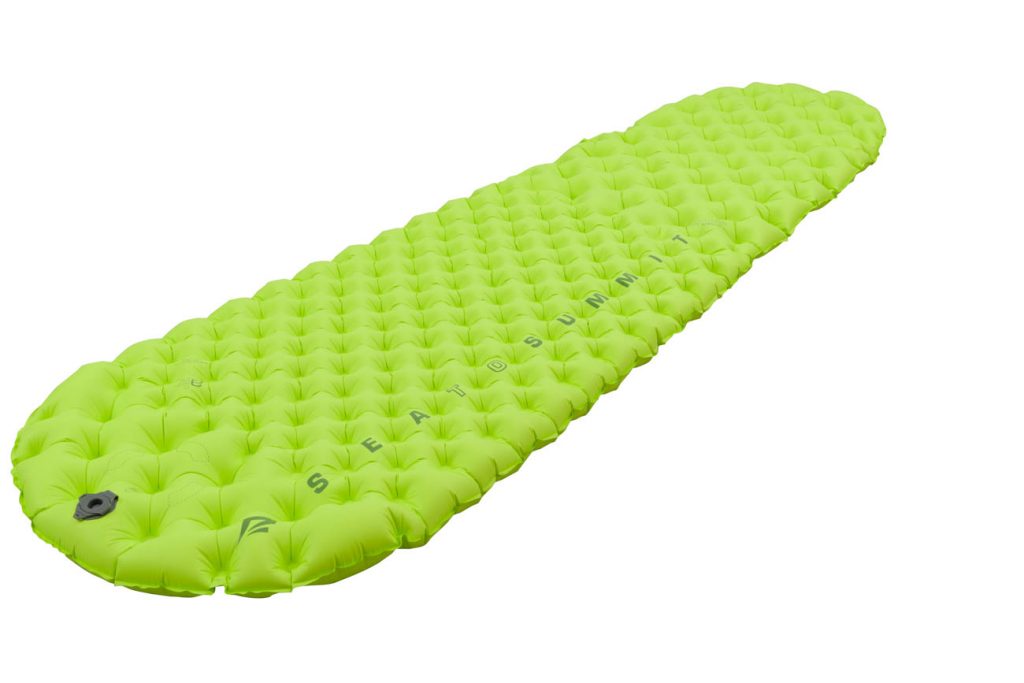
Thickness: 2.4in
Type: Inflatable
Weight: 1.37lb
R-value: 4.2
What we Like: Air Spring Cell, Thermolite insulation, Exkin Platinum thermal film, Anti-slip finish,
What We Don’t Like: Takes a while to inflate
Review: SEA TO SUMMIT has been a trusted name in outdoor gear for decades. Their Comfort Light Air mat is no exception to the quality of their products. It features a simple and effective design that allows it to be rolled up or folded for easy transportation, making this mat ideal for backpacking trips. Additionally, the air cell construction provides a comfortable and stable sleeping surface. At just over a pound, it is also one of the lightest on this list.
KLYMIT Static V

Thickness: 2.5 in
Type: Inflatable
Weight: 1 Pound
R-value: 1.3
What we Like: Deep Weld Patterning, Body Mapping Technology, Anti-fall Rails, Has a safety valve van
What We Don’t Like: Low R-value
Review: The Static V is one of the most popular sleeping pads on the market for good reason. It’s comfortable, durable, and easy to inflate and deflate. The deep weld patterning is a patented technology that provides improved insulation and airflow, while the body mapping reflects heat back to your body for a more comfortable and restful night’s sleep. The anti-fall rails provide a barrier between you and the ground, which is great for those who are concerned about rolling off their pad in the middle of the night. The Static V also includes a safety valve that prevents over-inflation and makes the pad easy to use.
Nemo Tensor Ultralight Sleeping Pad

Thickness: 3.0 in
Insulation: Aluminized Film
Type: Inflatable
Weight: 13.12 Ounces
R-value: 3.5
What we Like: Many sizes, Thickness up to 3 inches, High-quality upholstery fabric, Thermal Mirror film 2-layer insulation system, Impressive air pumping system
What We Don’t Like: High price
Review: The Nemo Tensor Ultralight Sleeping Pad is one of the best backpacking sleeping pads for camping and other outdoor activities. It has an impressive air pumping system and is made with high-quality upholstery fabric. This sleeping pad also features a thermal mirror film insulation system that makes it warmer than other models on the market. It is available in different sizes, so you can find the perfect fit for your needs.
Therm-a-Rest Z Lite Original Ultralight Foam
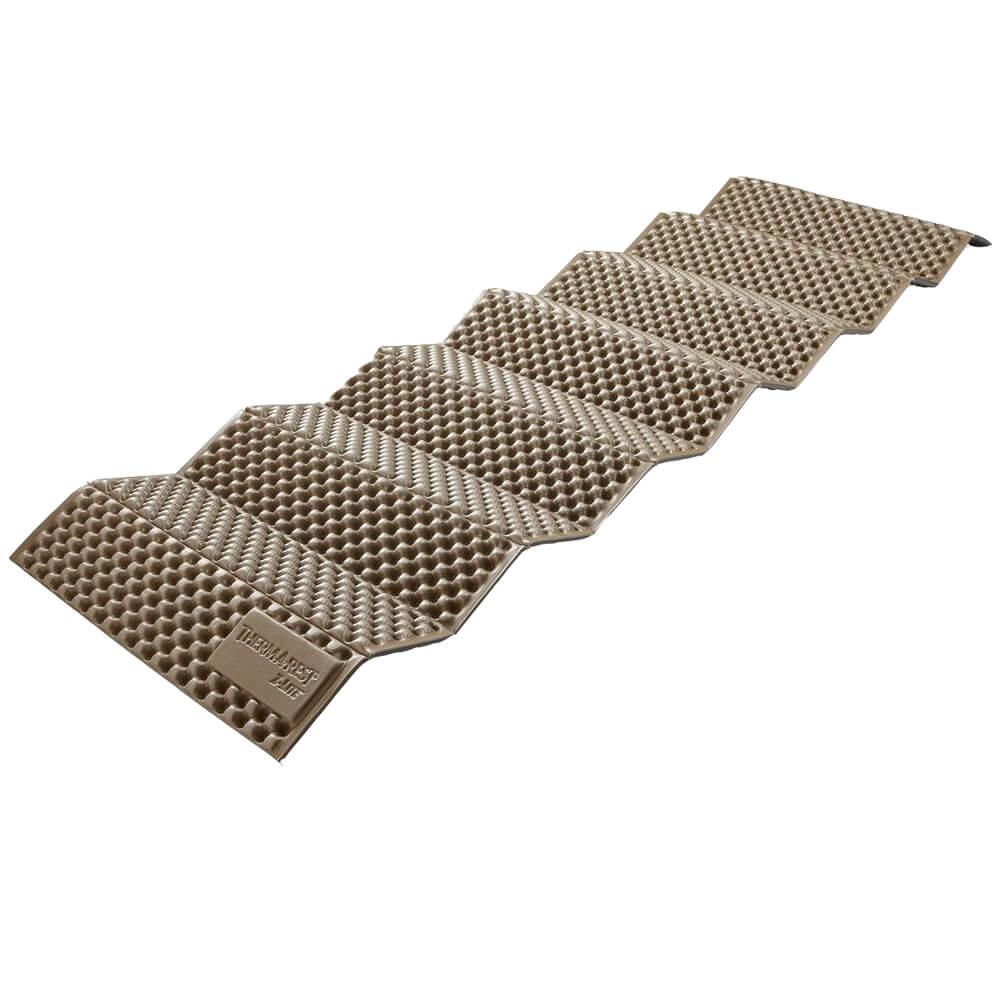
Thickness: 0.75 in
Type: Inflatable
Weight: 1.1 Pounds
R-value: 2.2
What we Like: Simple folding structure design, makes it super light to carry and packs neatly into a backpack
What we Don’t like: Not as durable compared to other options, doesn’t provide the best insulation for cold weather camping
Review: This closed-cell foam pad is designed with a foldable structure for easy carrying, storage, and packing. It has a self-inflating accordion-style design which makes it ultra-lightweight (at only 13 ounces). A durable outer layer protects the mat against rips or punctures that can develop on super thin mats over time under heavy use. The Therm-a-Rest Z Lite Original is a great choice for backpackers looking for an ultralight and compact sleeping pad option.
Sea to Summit Ether Light XT
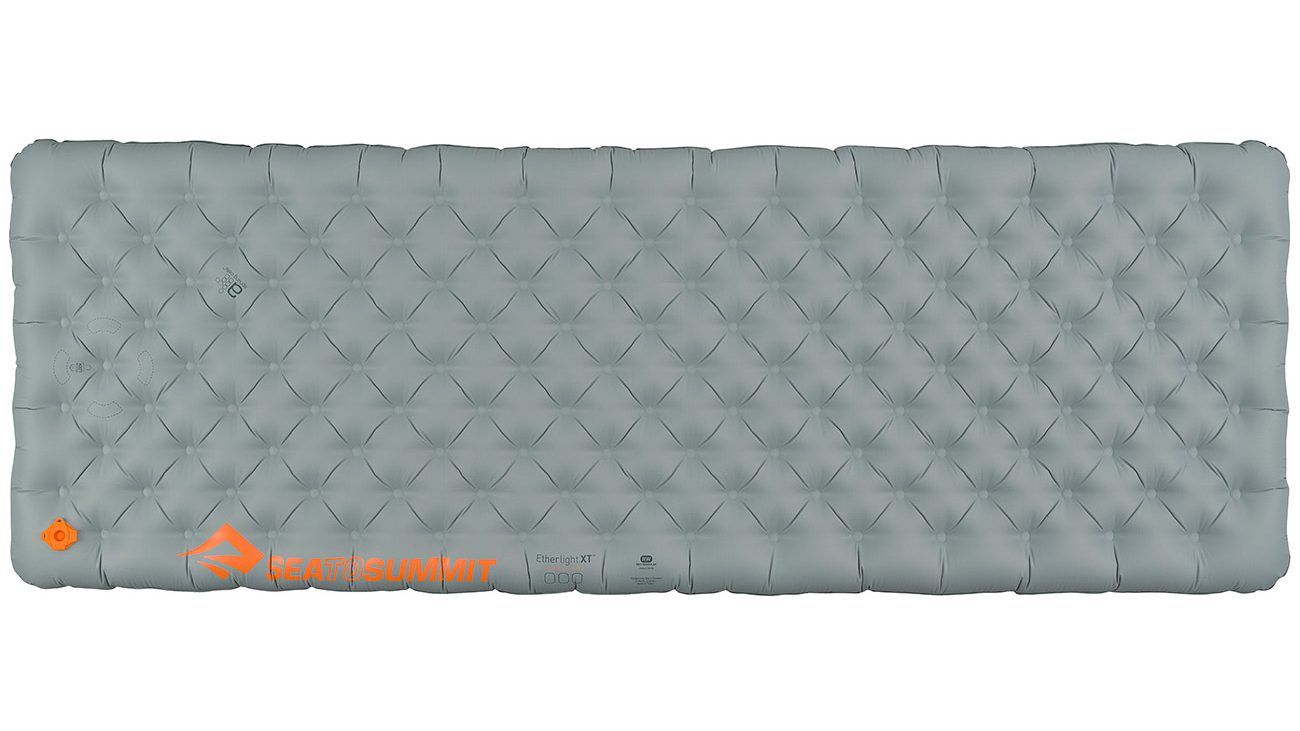
Thickness: 4in
Type: Inflatable
Weight: 14.99 oz
R-value: 3.2
What we Like: Thickness up to 4 inches, Air Spring Cell construction, non-slip 30D/40D nylon face fabric, Light, Multi-function valve
What We Don’t Like: Small size
Review: The Sea to Summit Ether Light XT is a dependable inflatable sleeping pad that does not skimp on comfort. It features an Air Spring Cell construction, which adds air-permeable cells into the closed-cell foam in order to improve insulation and allow some stretch when needed–two factors that make it one of our top picks for backpacking. The face fabric is also designed to protect against abrasion, while the non-slip 30D/40D nylon bottom offers you a stable surface on which to sleep. The pad comes with an ultra-lightweight multi-function valve that provides excellent inflation and deflation.
Sea to Summit Camp SI
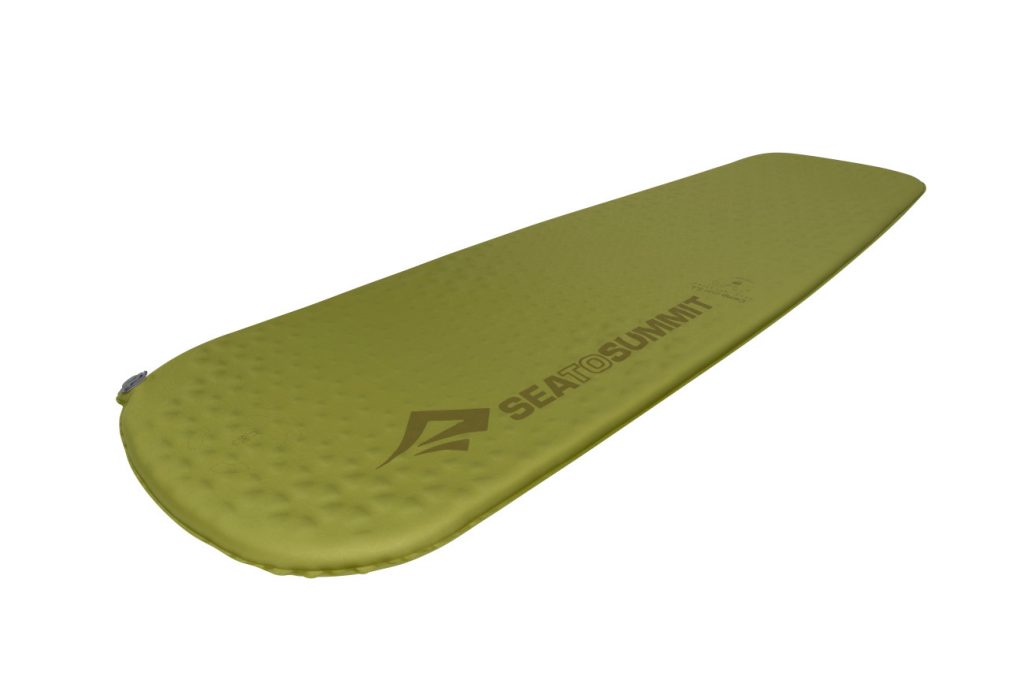
Thickness: 4in
Type: Inflatable
Weight: 14.99 oz
R-value: 3.2
What we Like: Thickness up to 4 inches, Air Spring Cell construction, non-slip 30D/40D nylon face fabric, Light, Multi-function valve
What We Don’t Like: can be difficult to inflate
Review: The Sea to Summit Camp SI is one of the best sleeping pads for backpackers and campers because it packs down so small, weighs just 14.99 ounces, and its self-inflating design ensures a good night’s sleep on uneven ground without having to blow up or deflate your pad every day. The air spring cell construction means that the Camp SI inflates and deflates quickly and easily with a single push of its multi-function valve.
You can also customize the firmness of the pad by adding or releasing air. The Camp SI is comfortable for side and back sleepers alike, with a thickness of up to four inches. It has a non-slip 30D/40D nylon face fabric that will keep you from sliding off your sleeping pad on those cold mountain nights.
Big Agnes Insulated Q Core SLX
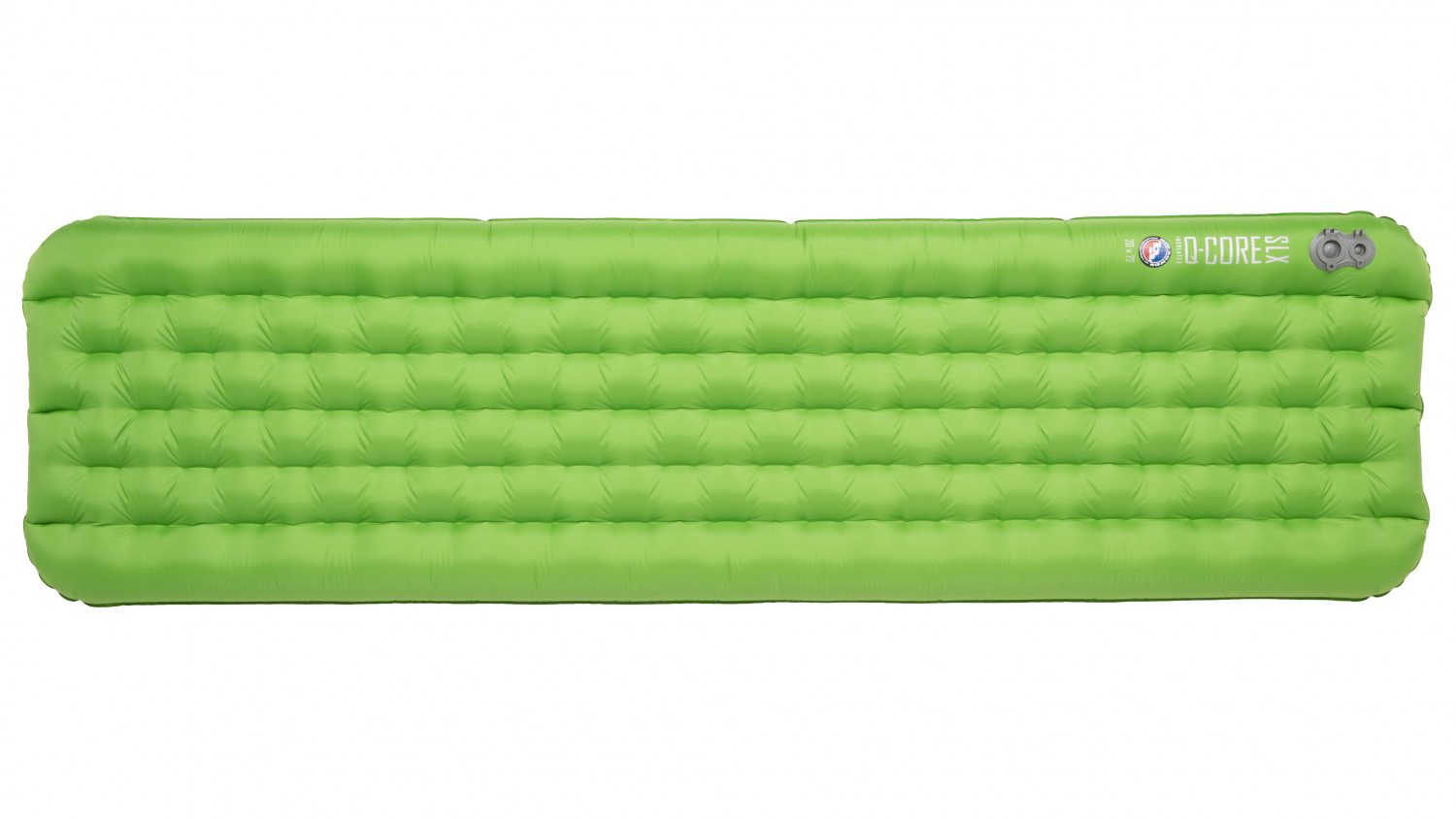
Thickness: 3.5in
Type: Inflatable
Weight:17oz
R-value: 3.2
What we Like: Quick inflation, comfortable under hips and shoulders
What we Don’t Like: Expensive
Review: The Big Agnes Insulated Q Core SLX sleeping pad is one of the best on the market. It’s quick to inflate, comfortable under hips and shoulders, and has an R-value of .32. At 17oz it’s also relatively lightweight. The only downside is that it comes at a high price tag.
Sleepingo Camping Sleeping Pad

Thickness: 2 in
Type: Inflatable
Weight:14.4 Oz
R-value: 2.1
What we Like: Low Price, Big size, Light, The durable surface is water-resistant, Quality air cells
What We Don’t Like: Not as Warm as Some
Review: The Sleeping Camping Sleeping Pad is one of the most popular and affordable options on the market. It’s a good choice for people looking for an inflatable pad that is both lightweight and easy to transport. This model can be inflated in just a few minutes, and it features a durable surface that is water-resistant. Reviewers report that the pad is comfortable under a backpacker’s hips and shoulders.
Many people have commented that they like its wide, spacious size as well. The only downside to this model appears to be that it lacks some of the insulation you’ll find in pricier options–it has an R-value of just two. This means it will not keep you as warm as some of the other options on our list. If warmth is your highest priority, then you may want to consider looking elsewhere.

Consideration
When it comes time to buy a sleeping pad, there are a few factors you’ll need to consider. Here are the most important ones:
Your Sleeping Position: If you sleep on your side or stomach, you’ll want a thinner and more flexible sleeping pad so that you’re not constantly rolling off of it in the middle of the night. If you sleep on your back, a thicker pad will likely be more comfortable for you and provide better insulation under your backpack, although this may make it slightly less packable than an ultralight sleeping pad model would.
Hiking or Camping: If you’ll be using an inflatable sleeping pad during short hikes in fair weather, you’ll want a lighter and more packable model than if you plan to use it while camping overnight in the woods. If weight isn’t much of an issue for your needs, comfort is usually more important when choosing between inflatable sleeping pads or self-inflating models–as long as they’re within a reasonable weight range compared with other camping gear you’ll be carrying.
Temperature: If you often backpack or camp in cold weather, it’s important to select a sleeping pad that will provide adequate insulation against the ground and keep you warm throughout the night. Conversely, if you’re mostly hiking or camping in warmer temperatures, a thinner and lighter sleeping pad may be more suitable.
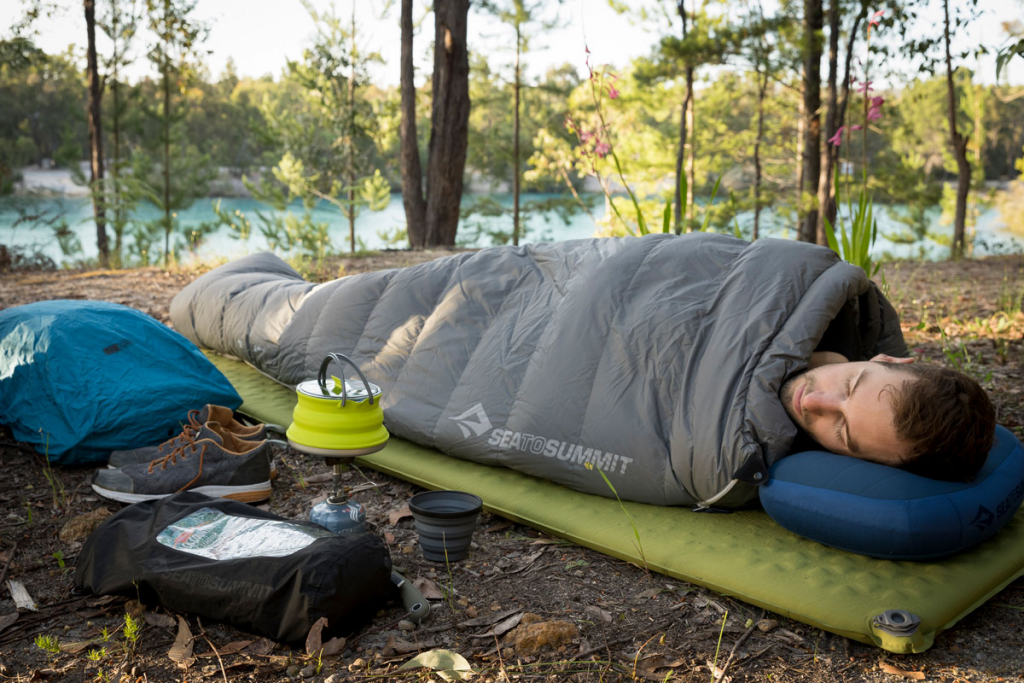
Types of Sleeping Pads
There are three types of sleeping pads on the market today: inflatable, self-inflating, and closed-cell foam.
Inflatable Sleeping Pads: These pads are made from either an airtight or baffled fabric that is filled with air when you blow into it. They usually pack down to a very small size, making them ideal for backpackers or climbers who need to save space in their backpacks. However, they are not as durable when it comes to punctures and cannot provide insulation from cold ground surfaces as some self-inflating models can.
Self Inflating Sleeping Pads: These pads typically have a thin layer of open-cell foam on top of a layer of airtight fabric. When you open the valve, the foam slowly inflates the pad as the air inside it is compressed. They usually provide more insulation than inflatable pads and are less likely to suffer from punctures. However, they are often heavier and bulkier when packed away than inflatable sleeping pads.
Closed-Cell Foam Sleeping Pads: These are the most durable type of sleeping pads. Most have at least four inches of foam inside, making them very comfortable against your body while camping or backpacking overnight in cold conditions. However, they don’t pack down to a tiny size and cannot be easily folded away into small spaces in your backpack when you’re not using them.
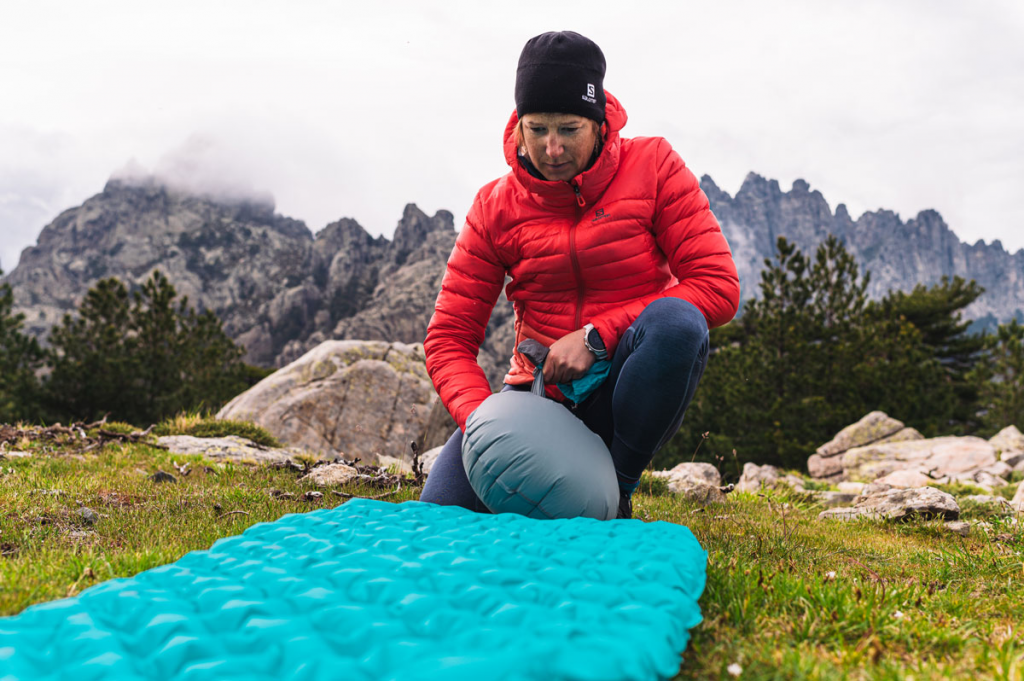
What to Look For When Buying a Sleeping Pad
Now that you know the different kinds of sleeping pads on the market, it’s time to determine which one is best suited for your needs and budget. Here are some key factors you’ll want to consider:
- Packed Size: There is nothing more annoying than struggling with an oversized sleeping pad in the wild–or even in your own backyard! Make sure you select a pad that packs down to an easy-to-carry size and is not too bulky, so it’s lightweight enough for backpackers or climbers on the go.
- Weight: If weight is one of your most important considerations when shopping for new camping gear, then inflatable sleeping pads are usually best. While self-inflating and closed-cell foam pads can be heavier than inflatables, they are often more durable and provide better insulation from cold ground surfaces.
- Price: You don’t have to spend a fortune on a top-of-the-line sleeping pad! In fact, many quality models can be purchased for under $100. Just be sure to compare the weight, packed size, and insulation ratings of each model before making your purchase.
- Comfort: One of the most important factors to consider when purchasing a new sleeping pad is how comfortable it will be against your body while you sleep. If you tend to toss and turn at night or often find yourself getting up in the middle of the night, look for a sleeping pad that is extra thick and firm.
- Insulation: If you plan to camp in cold weather, make sure your new sleeping pad has sufficient insulation built right into it so you stay warm throughout the night! The best self-inflating pads have at least four inches of cushioning–although the higher, the better.
- R-value: The R-value of a sleeping pad is a measure of its thermal resistance, or how well it insulates you from the cold ground. A higher R-value means greater insulation and therefore more warmth. Most camping sleeping pads have an R-value of at least three, with some as high as nine.
- Thickness: Most camping sleeping pads range from two inches thick to four or more inches. If you are a very large person, taller than six feet three inches, for example, look for thicker sleeping pads that can accommodate your size and weight.
- Durability: One of the biggest complaints about some sleeping pads is that they are not very durable and can easily be punctured by rocks or roots. If you plan to use your sleeping pad on rough ground, look for a model that is made from tougher materials, like rip-stop nylon.
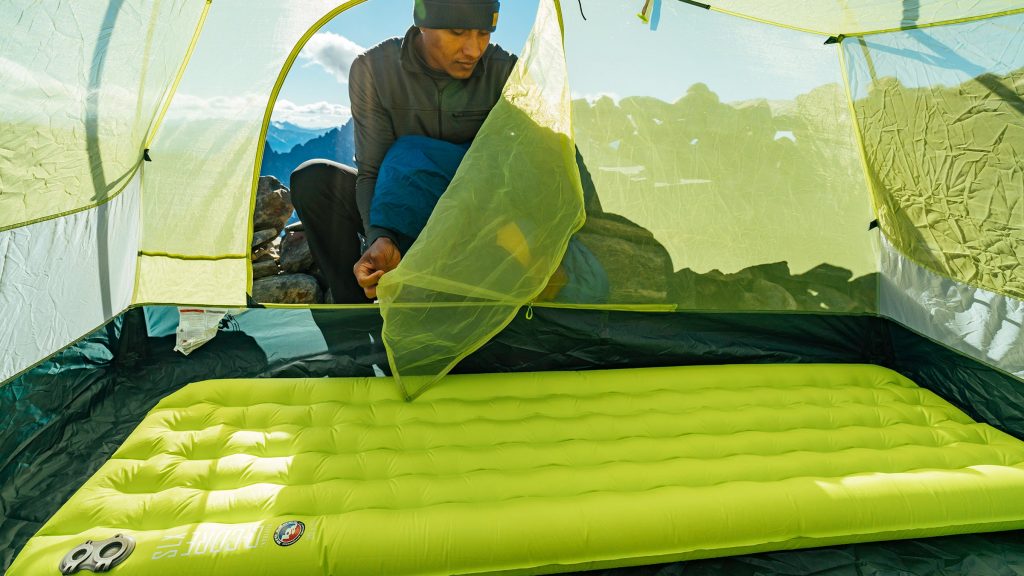
Sleeping Care Maintenance
To make your sleeping pad last for many years, it’s important to take care of it when not in use. Here are some tips on how best to protect your investment:
- Keep the valves closed so air doesn’t seep out when you’re not using the sleeping pad. If possible, store them inside a large bag or bin that can keep them dry.
- If your sleeping pad starts to lose air, don’t worry! You can easily re-inflate it by blowing into the valve opening or using a battery-operated pump.
- Don’t leave your sleeping pad in direct sunlight for long periods of time, as this can cause the materials to degrade and deteriorate over time.
- Store your sleeping pad in a cool, dry location when not in use–a closet or attic is best! Never leave it outside where it can be damaged by the sun and rain.
- No matter what kind of camping equipment you currently own or are looking to purchase, owning at least one good sleeping pad will help ensure that you get the good night’s sleep you need to be ready for your next outdoor adventure.
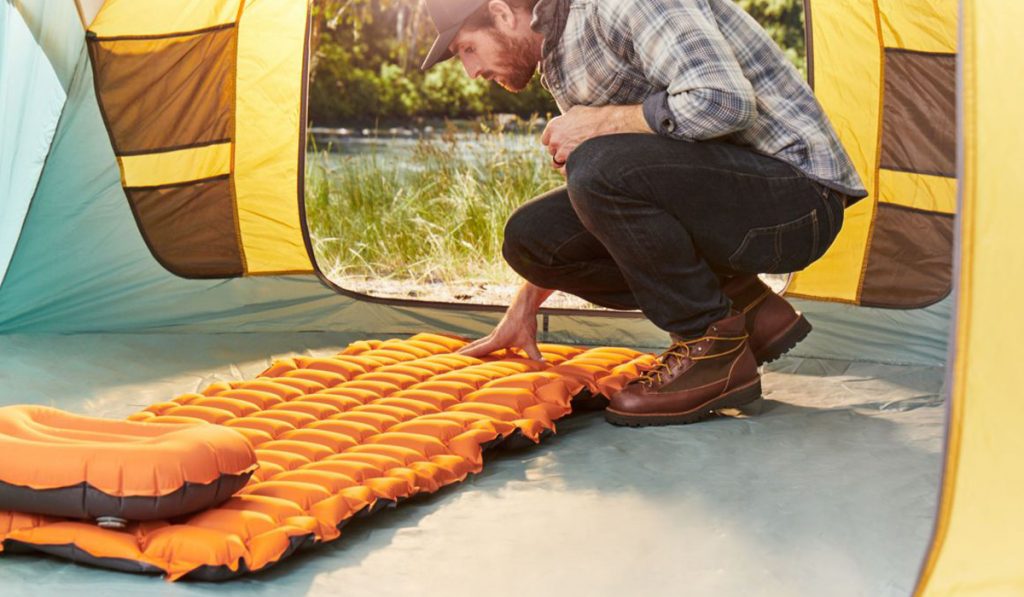
FAQ
Q. What is the R-value of a sleeping pad?
A. The R-value of a sleeping pad is a measure of its thermal resistance, or how well it insulates you from the cold ground. A higher R-value means greater insulation and therefore more warmth. Most camping sleeping pads have an R-value of at least three, with some as high as nine.
Q. How thick should my sleeping pad be?
A. Most camping sleeping pads range from two inches thick to four or more inches. If you are a very large person, taller than six feet three inches, for example, look for thicker sleeping pads that can accommodate your size and weight.
Q. What is the packed size of a sleeping pad?
A. The packed size of a sleeping pad is how big it gets when you fold or roll it up for storage, transport, and ease in carrying it to your campsite. Packed sizes vary greatly between models but are typically small enough so they won’t take up much room in your backpack.
Q. How much should I spend on a new sleeping pad?
A. You don’t have to spend a fortune on a top-of-the-line sleeping pad! In fact, many quality models can be purchased for under $100. Just be sure to compare the weight, packed size, and insulation ratings of each model before making your purchase.
Q. What are the most important factors to consider when purchasing a new sleeping pad?
A. The most important factors to consider when purchasing a new sleeping pad are its comfort, weight, packed size, insulation value (measured in R-value), and durability. Be sure to compare these features among different models before making your purchase.
Q.Are foam sleeping pads comfortable?
A. Foam sleeping pads are not as comfortable as some of the newer, self-inflating models on the market. However, they are still a popular option among campers because they are lightweight and easy to transport. They also tend to be less expensive than other types of sleeping pads.
Q. How do I choose the right sleeping pad for me?
A. The best way to choose the right sleeping pad for you is to take into account your weight, height, level of comfort, insulation requirements (measured in R-value), and how much you are willing to spend on a new one! Be sure also to compare packed sizes among different models–the smaller the better when it comes to storage and transport.
Q. Can I use my sleeping pad as a backrest?
A. Yes, many camping sleeping pads come with built-in support straps that allow you to use them as a backrest when you are sitting around the campfire or in your tent. This is a great feature if you plan on using your sleeping pad in your backyard or at a campsite.
Q. How many seasons are sleeping pads available?
A. Sleeping bags, tents, and other outdoor gear come with different levels of insulation to help campers stay warm during the winter months versus summer months when it is warmer outside at night. The same goes for camping sleeping pads–some are ideal for the cold winter months, while others are better suited for warmer weather.



